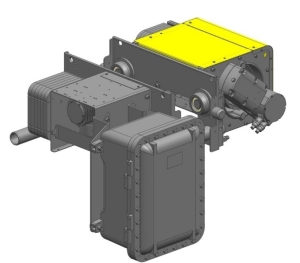
Product Features
Like the Spacemaster SX, the EX features an innovative design that includes a large drum diameter, which enables both the lowest headroom and the best wheel load in the industry, while providing near-true vertical lift with single reeving. Employing a large diameter drum also makes it possible for exceptional hook approaches and lift heights. The Spacemaster EX is available within these ranges for Class I, Division 1 rated environments:
- 1-20 tons (1000 - 20,000 kg) capacities
- 460 or 575/3/60Hz supply
- Two-speed hoist with 6:1 ratio, contactor control
- Two-speed trolley with 4:1 ratio, contactor control
- Low headroom or normal headroom trolleys
- Single reeved or double reeved
- Intrinsically safe-wired circuitry
- Mainline contactor and control transformer
- Pendant controller rated for hazardous locations
What is the difference between a Class I, Division 1 hoist and a Class I, Division 2 hoist?
There are many features that make a the Spacemaster EX CID1 hoist different than the CID2 hoist, including:
- Different hoisting and traveling motors
- Bigger hoist control panel and new panel fixing plates
- Armored cables instead of flexible conduits for motors
- Different cable entries for motor cables due to armored cables
- Intrinsically safe circuit for control commands and limit switches
- Additional barrier relays because of intrinsically safe circuit
- Additional labels to mark intrinsically safe circuit cables outside the enclosure
- Stainless steel hoist data and warning plates
What does intrinsically safe-wired mean?
Intrinsically safe electrical systems are designed to limit the electrical and thermal energy in a circuit to a level below what is required to ignite an explosive gas or dust atmosphere. A circuit design considers potential energy that may be present in field devices and interconnecting wiring. Intrinsically safe circuits are used for control commands and limit switches on CID1 equipment.
Hazardous Location Rating
This hoist is certified to meet Class I, Division 1, Groups C & D, T4 temperature class, and bears the CSA C/US mark. Class and Division rated equipment can be used in the appropriate Zone classified environment as permitted by the National Electrical Code (NEC 505.9 and NEC 505.20) and the Canadian Electrical Code (CEC C22.1).
